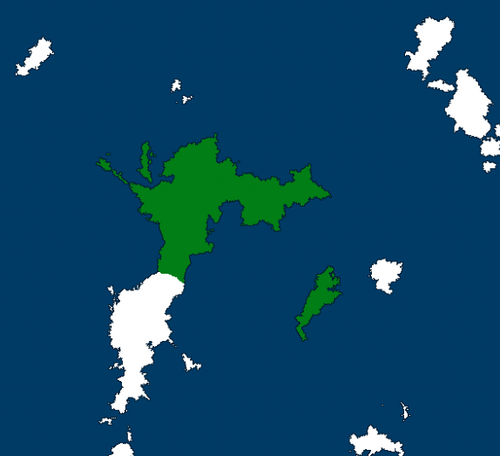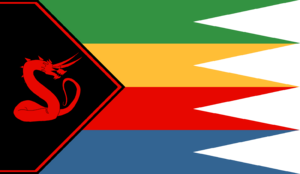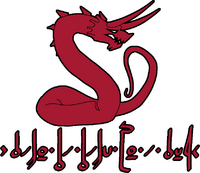Umetuč
The United Republics of North Umetuč ([u.ˈmɛ.tʼut͡ʃ] in Tokagebač) is a federal autoritarian parliamentary republic on the northern edges of the South Sea, in the continent of Syrovoho in Sonhel. It takes its name from the island of Umetuč, of which it occupies the northern part. The current territories occupied by the United Republics of North Umetuč were firstly settled in the 10th century by the nomadic tribes who will later adopt the names of Tokagebac, Cruiniiral, Valtarans and Albionians.
The United Republics of North Umetuč Mesa Umetučobe Nekjagoxo tonekekra | |
|---|---|
| Motto: | |
| Anthem: | |
 Map of North Umetuč in 2408 | |
| Capital and largest city | Tålakjemeqa |
| Official languages | Tokagebac |
| Recognised national languages | Tokagebac, Xopukuli, Mtàd Tokagebac |
| Recognised regional languages | Tokagebac, Cruiniiral, Ax tot Yonn, Dj̆ty, Xopukuli, Muippelore, Mtàd Tokagebac |
| Ethnic groups | Tokagebac, Xopukuli, Mtàd Tokagebac, Cruiniiral, Ax tot Yonn, Dj̆ty, Muippelore |
| Demonym(s) | Umetučite, Tokagebac |
| Government | Autoritarian parlamentary federal republic |
• President | Slabjo Čiček |
| Legislature | North Umetǔcite Parliament |
| Establishment | |
• Intervention in the Valtaran Civil War and establishment of the United Republics of North Umetuč | 2403 |
| Population | |
• Estimate | 28,915,215 |
• Density | 34/km2 (88.1/sq mi) |
| Currency | Nekjagod (₦) |
| Date format | DD/MM/YYYY |
| Driving side | doesn't |
History
Geography
Umetuč is located on the northern half of the main island of the Tumetuč Archipelago, called Umetuč. The country is split in two sides by the Čytmekjem mountan range, which than is interrupted by the Čid̨ud̨ig valley. In the eastern peninsula there is also another mountain, detached from the Čytmekjem, called B̨ob̨ekokib. The highest peak inside Umetučite border is

